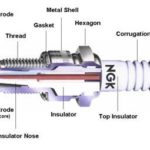Winter is perhaps the worst time of the year for drivers, and the freezing temperatures often bring out the worst of owning a car. You have to clean snow off your vehicle every morning, defog the windows and windshield, and deal with tire pressure issues, corrosion, fluid-thickening, and spark plug failure — all of which can manifest unexpectedly. Your best bet in keeping your car in perfect shape during the colder months is to expect the worst, take proactive measures, and prepare a daily care strategy ahead of time. Here are a few important things to keep in mind:

1. Have a Breakdown Kit
Your winter car breakdown arsenal should contain a flashlight, a hi-visibility vest, a blanket, screenwash, snow grips, food, and a charged mobile phone. These can come in handy if your battery dies, you get stuck in the snow, or you face some other mechanical problem. They can also help if you get involved in an accident, which you are at a bigger risk of during winter. Always ensure you have the contacts of a mechanic and lawyer in your phonebook for when the chips are down. Your car accident lawyer in Florida will help you seek compensation if you are hurt or your car is damaged, while a mechanic will assess the damage and repair your vehicle.
2. Pay Attention to Your Car’s Battery
The cold is your car’s biggest enemy, and its impact can be worse if you don’t drive regularly. Pay attention to how your car behaves when you start it. If it’s too slow or takes multiple attempts, it means there is something wrong with your battery. A mechanic will help you determine if your problem is a cause for alarm or something you can reverse. You might want to invest in a trickle charger if your battery tends to go flat when left for a few days.
3. Inspect Your Brakes
Squeals, rattles, a soft pedal, an apparent increase in stopping distance, and shakes are all signs of an imminent braking disaster. If you feel your brakes are not as efficient as they were some weeks or months ago, it’s good to have them checked as snowy roads will only increase stopping distances and worsen the inefficiency of your braking system.
4. Change Your Tires
The type and condition of your tires will dictate your car’s handling on slippery snowy roads. If there is significant damage on the sidewalls, or you have a low tread or slow puncture on one of your tires, you may find your vehicle a tad difficult to control. Inspect them a few days before winter to ensure the tread is okay and there are no obvious signs of damage. You might also want to replace them with high-quality winter tires if you are going to spend a lot of time on the road.
Endnote
Getting your car ready for winter and keeping it going when the season sets in isn’t as difficult as it seems. All you need to do is ensure the cold months don’t find you unprepared. The above tips can be a great starting point in preparing a comprehensive winter car maintenance strategy.








